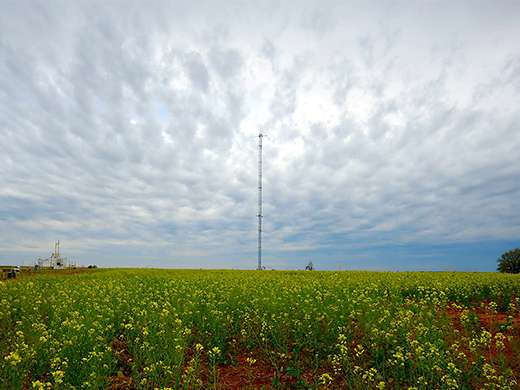Scientists nudge climate models to eliminate noise and clarify observations

Like a high-performance race car, climate models need frequent mods so they can react to changing conditions. A bit of lube, in the form of efficient simulation strategies, helps produce optimal model engine performance. One such modeling mod is nudging, a simple data assimilation technique to expose model bias, or how far off the model is from realistically simulated atmospheric states.
Nudging can reduce the effects of natural variability, making it easier to recognize a clear signal in the noise of all results. Researchers at Pacific Northwest National Laboratory evaluated Community Atmosphere Model version 5 (CAM5) simulations by restricting the simulated winds to uncover the parameters that other aspects of the simulation are most sensitive to. They found that the fidelity of the constrained simulations depended on two conditions: the detailed implementation of the nudging technique, and the mechanism they used to perturb parameters that affect precipitation and clouds.
Their results argue for caution when using nudging to assess precipitation and cloud brightness sensitivities from parameter changes in global circulation models. They also showed that short, "ensemble" simulations can be used to understand how model sensitivities evolve.
"For the first time, this study evaluated the benefit and cost of the nudging method to quantify the model's sensitivity to uncertain parameters," said Dr. Guangxing Lin, an atmospheric researcher at PNNL. "It also helps us understand the interactions between physics and dynamics in the model."
Global climate models are large, complex system engines. They are so complex, many processes must be simplified. The upshot is that these models contain a large number of "uncertain parameters" in simplified descriptions that represent processes unresolved by the computation. Quantifying how sensitive models are to these uncertain parameters is important for future climate projections. The nature of the chaotic atmosphere (noise) often obscures the atmospheric responses to changes in parameter values (signals) used in global climate models. To overcome the effect of natural noise, the traditional method is conducting sufficiently long simulations. However, such long simulations can be computationally expensive, or even impractical, for high-resolution models or when many experiments are needed. Model tuners wanted to know if nudging can be used to pinpoint sources of uncertainty in the model parameters using much shorter simulations.
Scientists first conducted model sensitivities in traditional free-running simulations. They perturbed two parameters related to cloud and convection as illustrating examples. They then turned to the model sensitivities in nudged simulations with wind nudged to free-running control simulations. By comparing nudged simulations with free-running simulations, they evaluated the fidelity and computational cost of the nudged simulations.
The nudging method to constrain meteorological fields toward weather reanalysis or a baseline simulation may help reduce the effect of natural variability and distinguish signal from noise within a shorter simulation length. On the other hand, nudging can also caused unintentional side effects due to the addition of an artificial forcing term to the physical forcing term. Thus the question of whether nudging can be used to quantify model sensitivities needs to be answered.
The relative computational costs of nudged and free-running simulations were determined by determining the magnitude of internal variability in the physical quantities of interest, as well as the magnitude of the parameter perturbation. In the case of a strong perturbation in convection, temperature, and/or wind, nudging with typical strength leads to non-negligible side effects due to the distorted interactions between resolved dynamics and parameterized convection. On the other hand, for a relatively weak perturbation in the large-scale condensation scheme, the 1-year free-running simulations were strongly affected by the natural noise.
The study showed a necessary trade-off between the reaction of model sensitivities to nudging and sufficiently reducing the effects of internal variability. Future work is needed to find out whether a "sweet spot" exists for the nudging strength.
More information: Guangxing Lin et al. Can nudging be used to quantify model sensitivities in precipitation and cloud forcing?, Journal of Advances in Modeling Earth Systems (2016). DOI: 10.1002/2016MS000659
Provided by Pacific Northwest National Laboratory




















